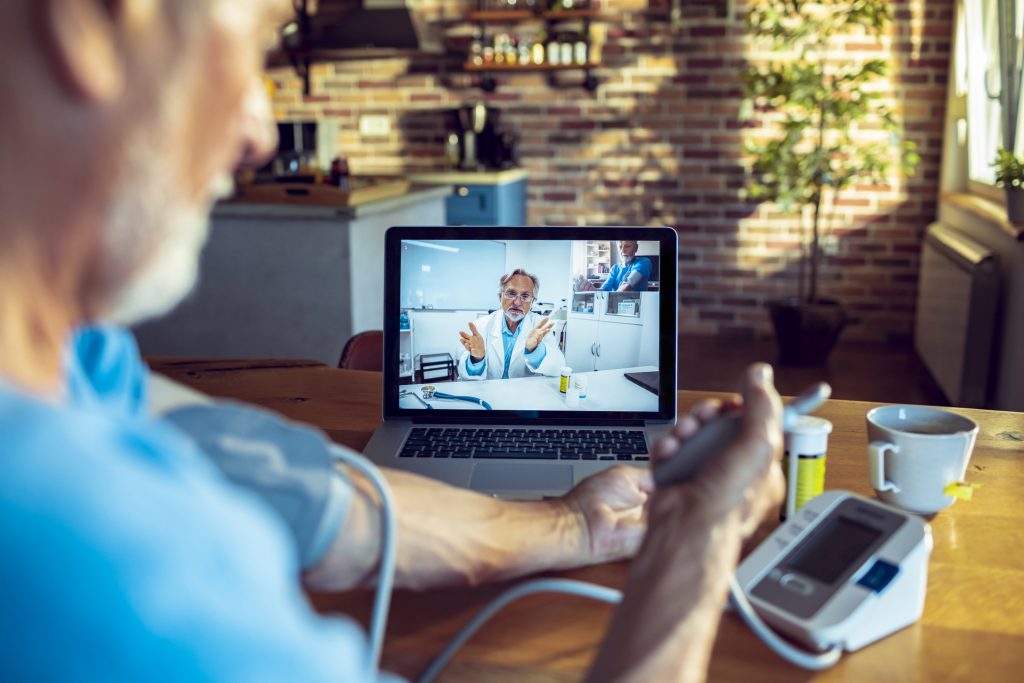Telehealth and the patient-physician relationship

Telehealth visits have increased significantly since the beginning of the COVID-19 pandemic in the US. In March 2020 alone, when most of the country shut down amid orders to stay at home, telehealth visits increased 50%, according to a study conducted by Frost and Sullivan. The importance of the patient-physician relationship takes on new significance during the pandemic, as telehealth’s popularity increases.
A separate survey found that almost three-quarters of patients said they’d consider using telehealth to be remotely screened for COVID-19, and two-thirds said the pandemic has increased their willingness to try virtual care. Frost and Sullivan also forecast a sevenfold growth in telehealth by 2025 – a five-year compound annual growth rate of 38.2%.
Developing and maintaining a positive, effective patient-physician relationship while conducting telehealth visits depends on the patient’s comfort level as well as efforts the provider can make to ensure the visit is productive. Joy L. Lee, PhD, a research scientist at Regenstrief Institute and an assistant professor at Indiana University School of Medicine in Indianapolis, offers four ways the physician can be proactive about fostering a patient-physician relationship during these challenging times.
- Prepare the patient. The provider should set expectations for the patient at the beginning of the telehealth visit. Lee suggests telling the patient, “This is going to look different than our usual visits” but reassuring the patient that they will continue to receive the quality healthcare they need.
- Engage the patient. The patient-physician relationship depends on communication and engagement. Ask questions such as: “What are some of the things you want to talk about today? What are your primary healthcare concerns?” Then reassure the patient by responding appropriately to their concerns.
- Establish guidelines for the practice. Telehealth may be new to many independent practices. Helping the clinical staff understand how the visit will work can help ensure consistency for the patient. This reassurance can help establish a good relationship with the practice’s patients.
- Acknowledge the pandemic’s impact. Lee suggests that “Physicians should make room to address COVID-19 even if a virtual visit is routine and has nothing to do with the coronavirus. Providers should ask a question or two such as, ‘How are you doing now? How are you dealing with COVID-19? What does this pandemic mean for you?’ It is helpful to acknowledge the pandemic because we are doing virtual visits in part due to the coronavirus. Providers should not skirt the issue.”
Additional considerations for building and maintain a positive patient-physician relationship during telehealth visits include:
- Conducting virtual visits in a quiet and secure space, to make patients feel more comfortable about the privacy of their healthcare visits.
- Understanding that some patients may not have quality or reliable internet service. These patients may require a phone call rather than a video visit.
- Taking extra time and effort to foster a strong relationship with new patients and with existing patients who are infrequent visitors to the practice.
Dr. Lee emphasizes that “The practice needs to be proactive in communicating with patients. They can provide numbers to call, or let patients know that secure messaging is always available. Even for patients who have not seen their doctor in three years, they can be told proactively that they can schedule a visit if something comes up. Practices can let patients know how to schedule a virtual visit and let them know what a virtual visit will look like, so they know how to prepare for it.”
Elation Health is focused on strengthening the relationship between patients and physicians and enabling phenomenal care for everyone. Contact us to learn more about how we can help you.






